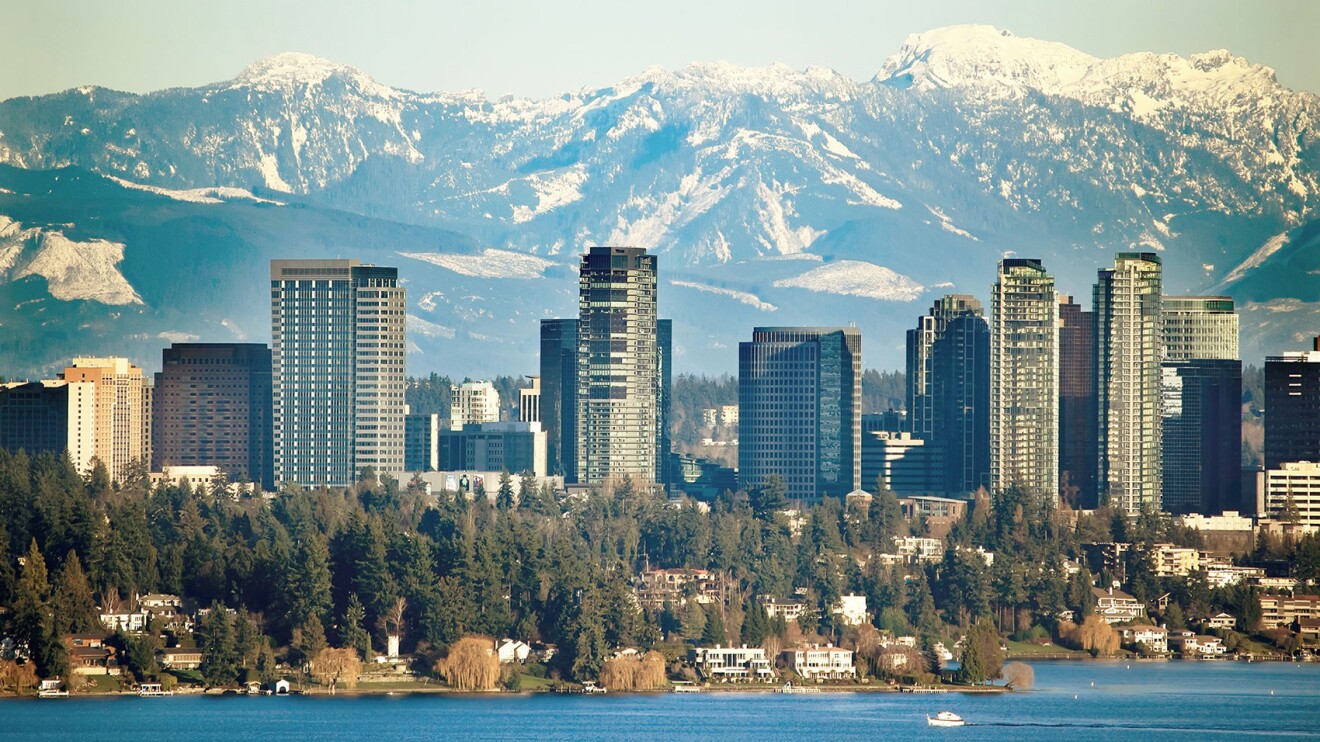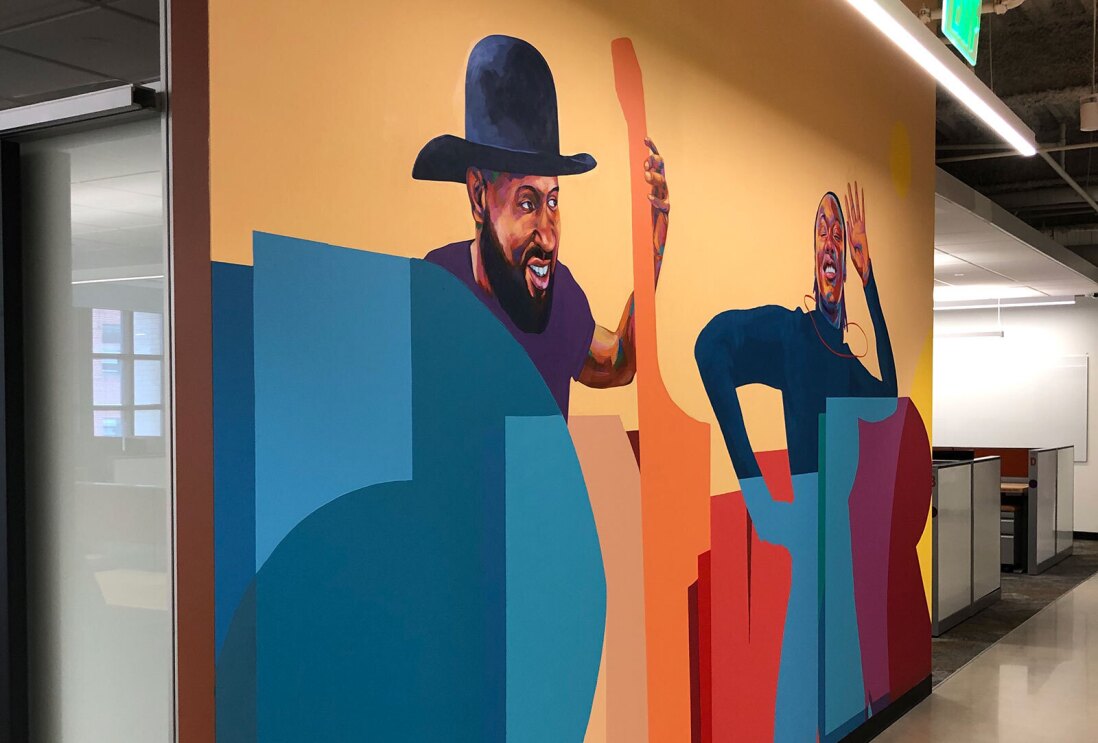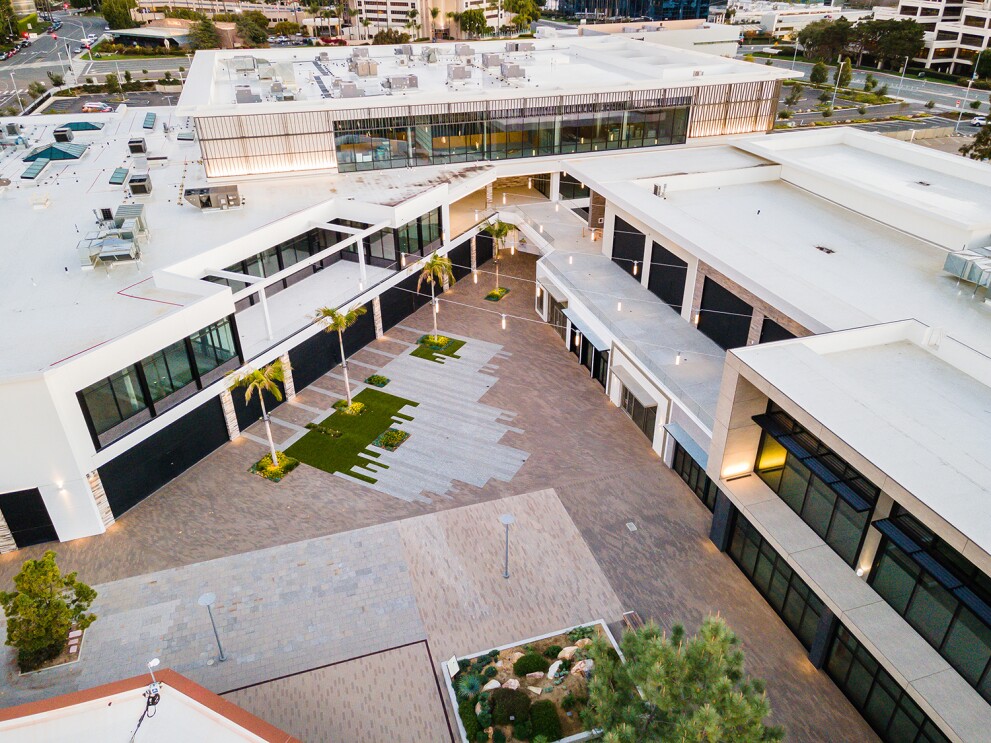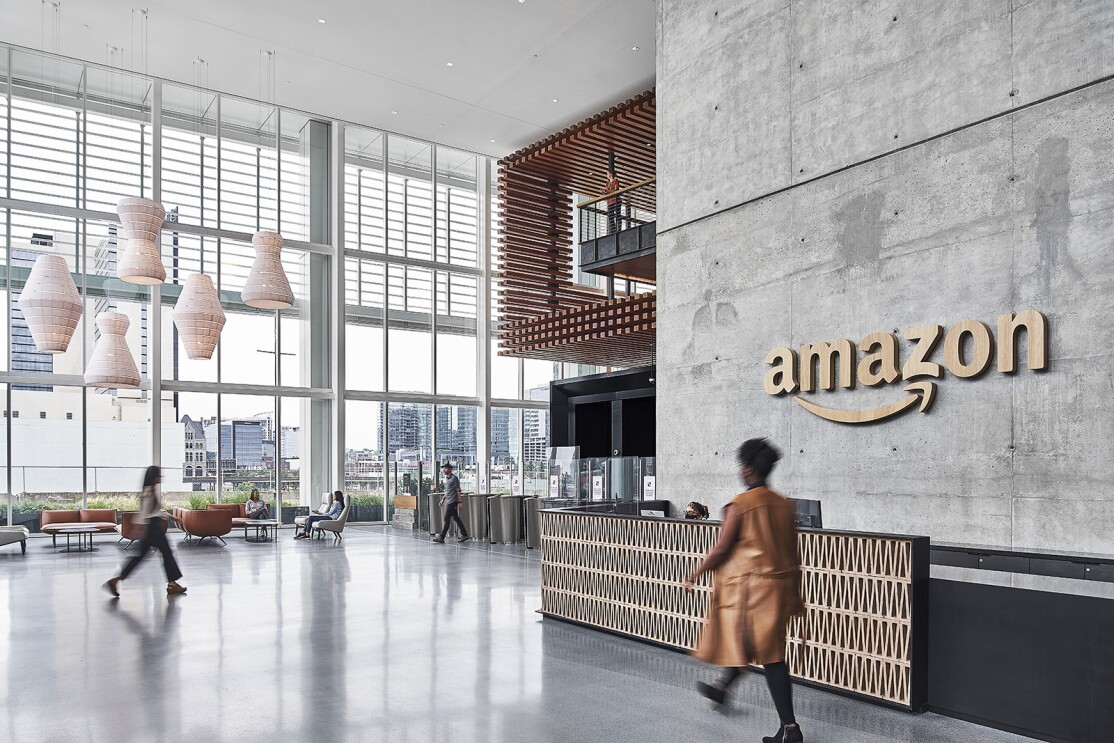Amazon’s Seattle home in the South Lake Union area hugs Lake Union to the north, and runs south almost a square mile until it gives way to Seattle’s historic downtown. Amazon started moving into South Lake Union in 2010.
Most of South Lake Union’s land was bought decades ago by the late Microsoft co-founder, Paul Allen. Today, his vision of creating a biotech and technology hub in the once-hardscrabble area is now being realized. Scores of bright yellow cranes dot the skyline. Earthmovers and trucks dig foundations for modern buildings.
“South Lake Union, where Amazon lives, is arguably the most significant urban revitalization effort in America today,” said Mike McQuaid, the board president of the South Lake Union Community Council. “It’s not just that Amazon has revitalized a portion of Seattle. But it’s the way the company has revitalized our city that’s so important.”
The company’s impact on South Lake Union, has been transformative.
Amazon’s investments in Seattle
Direct*
- Number of buildings: 54
- Square Feet: 11.9 million
- Local retail within Amazon headquarters: 29 restaurants/cafes + 10 other services
- Amazon employees: 50,000+ (55,000+ in the Puget Sound region)
- Capital investment (buildings & infrastructure): $5.4 billion
- Operational expenditures (utilities & maintenance): $2 billion
- Compensation to employees: $32.2 billion
- Number of annual hotel nights by visiting Amazonians and guests: 1,289,000 (2013-2018)
- Amount paid into the city's public transportation system as employees' transportation benefit: $79 million
Indirect**
- Additional jobs created in the city as a result of Amazon's direct investments: 244,000
- Additional investments in the local economy as a result of Amazon's direct investments: $53 billion
- Increase in personal income by non-Amazon employees as a result of Amazon's direct investments: $25.3 billion
Community investment
- Committed in-kind and cash donations to Seattle nonprofits fighting hunger and homelessness: $135+ million
- Funding for public transit in the Seattle MSA (additional bus capacity and SLU streetcar): $7.6 million
- Contributions to education programs: $15 million 30 Seattle Schools receiving Amazon Future Engineer Robotics grants
*From 2010 (when Amazon moved its headquarters to downtown Seattle) to December 2018. Compensation data covers 2013-2018 period. Public transportation expense covers from 2010 to summer 2019.
**From 2010-2018 for Seattle Metropolitan Area (MSA). Calculated using Input-Output methodology and multipliers developed by the US Bureau of Economic Analysis.
Amazon has paid more than $32 billion in wages to its local workforce and invested 4.5 billion into its Seattle campus. Across the city, Amazon has teams in 47 buildings, and is in the process of constructing additional space to keep accommodating the company’s hiring efforts. The company has built bike lanes across and many public spaces in the neighborhood and even a system that utilizes recycled heat from a nearby data center to heat millions of square feet of office space. Fewer than half of amazon’s SLU workforce comes to work every day by car; most use public transportation, bike or walk to work. The company funded an additional streetcar and its operating costs to increase the frequency for all residents in the neighborhood.
From the beginning, Amazon has expanded its local footprint while working with neighborhood groups to make improvements that resonate across the community.
“Amazon’s decision to consolidate and grow in the city itself, and not wall itself off or separate itself from the urban core, has been a huge benefit in many ways, and certainly in terms of tax revenue for the city and state,” said Jon Scholes, the president of the Downtown Seattle Association. “Amazon’s decision to grow up and not out; to protect the environment; to take advantage of the infrastructure that’s been developing downtown, whether its transit or sidewalks. Those decisions have been very beneficial for the city and region.”
One way to measure the company’s economic impact has been through the local jobs it’s helped catalyze.
Overall, the company’s investments have created 244,000 indirect jobs in Seattle in several industries, from food, healthcare, and professional services, to construction and real estate. Amazon estimates that its investments in Seattle since 2010 resulted in an additional $53 billion being added to the city’s economy, with every Amazon investment dollar generating an additional 0.52 dollars for the city’s overall economy.
Importantly, unlike other tech companies, Amazon doesn’t offer free catered food to employees. In fact, Amazon’s cafeterias were purposely designed to only feed one third of Amazon’s Seattle employees. Instead, each Amazon office building leases space to a few local restaurants, and Amazon has purposefully eschewed offering space to national chains, choosing instead to work with local restauranteurs. Moreover, employees often leave their offices to get lunch, drinks, or dinner at other local restaurants that have sprung up around Amazon buildings.
Amazon’s decision to grow up and not out; to protect the environment; to take advantage of the infrastructure that’s been developing downtown, whether its transit or sidewalks. Those decisions have been very beneficial for the city and region.
Jon Scholes - president of the Downtown Seattle Association
According to the Downtown Seattle Association, more than 2,000 small businesses have opened in downtown Seattle since Amazon moved to South Lake Union.
Many factors went into the company’s decision to create a downtown campus. One big reason was that, very early on, the company’s leadership team realized that today’s engineering talent is far more interested in living and working in an urban environment than prior generations have been.
Over the decade-plus that Amazon has been near downtown Seattle, its local investments have grown and evolved to match the community’s needs. Since 2016, Amazon has made in-kind and cash donations to its Seattle nonprofit partners Mary’s Placeand FareStart. These donations include a first-of-its-kind family shelter within an Amazon building for Mary’s Place, and classroom and restaurant space for FareStart’s job training program for people experiencing homelessness or living in poverty. The collective value of these donations, including annual rent, is more than $130 million, with Mary’s Place alone receiving $100 million in in-kind and cash donations over the next 10 years.
In October 2018, Amazon announced an initial $2 million grant and creation of the Right Now Needs Fund – a collaboration with the Alliance for Education designed to give school communities enhanced capacity to meet the urgent and basic needs of students in Seattle Public Schools and eliminate barriers to learning. The fund is designed to directly benefit students.
In summer 2019 Amazon expanded the Right Now Needs Fund with a new $250,000 grant for summer programming in low-income neighborhoods, impacting hundreds of Seattle’s children and youth.
“This is a thoughtful way for Amazon to invest in the critical needs of Seattle’s public school community,” said Lisa Chick, the president and CEO of the Alliance for Education. “We’re working alongside Seattle school principals who have told to us how incredibly important Amazon’s support is going to be to their students.”
Amazon’s growth, together with the development of the South Lake Union community, has attracted national attention, and positioned the once-gritty neighborhood as a rising star in the hi-tech world. In 2010, only seven Fortune 500 companies had a presence in Seattle. Today, there are 31.
Google, the Silicon Valley-based search and advertising giant, will open a major new tech hub in South Lake Union in 2019. Google’s building is expected to house more than 5,000 employees, and will complement two new office buildings Facebook and Expedia have recently opened overlooking Lake Union.
Trending news and stories
- Amazon Pet Day 2025 is coming May 13-14 with 48 hours of deals on pet products and supplies
- LinkedIn names Amazon a top US company where people want to work for the eighth year in a row
- CEO Andy Jassy’s 2024 Letter to Shareholders
- AWS is first major cloud provider to deliver Mistral AI’s Pixtral Large as a fully managed, serverless model









